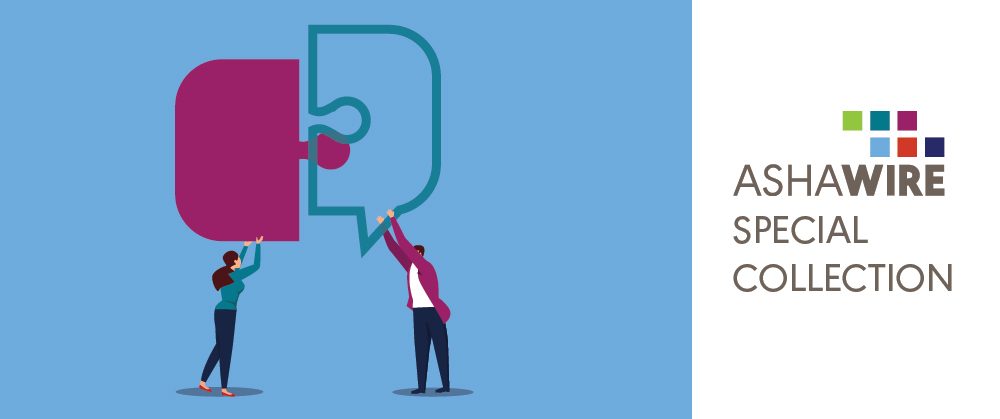The discipline of communication sciences and disorders isn’t an island unto itself. To successfully advocate for and treat their patients, many audiologists and speech-language pathologists (SLPs) find themselves collaborating with professionals in a wide variety of fields. Interprofessional education (IPE) occurs when audiologists and SLPs share knowledge with experts in other professions in order to better benefit the clients they both serve, and interprofessional practice (IPP) occurs when these professionals work together to provide better patient outcomes.
The American Speech-Language-Hearing Association (ASHA) has highlighted IPE/IPP in a variety of ways, including through free courses, sessions at previous ASHA Conventions, and even through ASHA’s Envisioned Future: 2025. Throughout the years, many authors have presented their own studies and recommendations on IPE/IPP for the ASHA journals. Now, through our latest special collection, you can find all of these resources in one place!
Our Special Collection on Interprofessional Education/Interprofessional Practice contains articles on IPE/IPP from all five ASHA journals as well as from The ASHA Leader. Focused on populations from children to older adults in a variety of practice settings and specializations, this special collection has something for everyone. Below, we’ve highlighted a few articles that may be of interest.
Moving From Interprofessional Education Toward Interprofessional Practice: Bridging the Translation Gap: This article provides an important primer on both IPE and IPP, talking about the key principles, goals, and limitations of IPE as well as looking at a translational model to move from IPE to IPP.
A National Survey of Speech-Language Pathologists’ Engagement in Interprofessional Collaborative Practice in Schools: Identifying Predictive Factors and Barriers to Implementation: A survey of nearly 2,000 school-based SLPs served as the basis of this article, which showed low levels of IPP and highlighted systemic change needed on both university and public school levels.
Audiology and Speech-Language Pathology Simulation Training on the 1-3-6 Early Hearing Detection and Intervention Timeline: IPE is also important between two of ASHA’s cohorts: audiologists and SLPs. This article looks at a simulation training among audiology and speech-language pathology graduate students in early hearing detection and intervention (EHDI).
Cotreatment as a Vehicle for Interprofessional Collaborative Practice: Physical Therapists and Speech-Language Pathologists Collaborating in the Care of Children With Severe Disabilities: The needs of children with severe disabilities are myriad. This article focuses on collaboration between the SLP and the physical therapist.
The Circle of Care for Older Adults With Hearing Loss and Comorbidities: A Case Study of a Geriatric Audiology Clinic: Authors discuss modifying audiologic practice for patients with comorbidities and the benefits that enriched interprofessional communication can provide for patients and their families.
In addition to more than 30 articles across the ASHA Journals and The ASHA Leader, this special collection also contains links to important ASHA resources such as the ASHA Practice Portal and a free webinar titled “The Why, What, and How of Interprofessional Collaboration.” By clicking “Other IPP/IPE Resources” on the right, you’ll find links to webinars, videos, and information about the role of IPE/IPP in ASHA’s Envisioned Future: 2025.
You can explore the entire special collection here. We hope that the special collection on IPE/IPP inspires our readers to think about how they can seek to learn from and collaborate with professionals in their own work.









